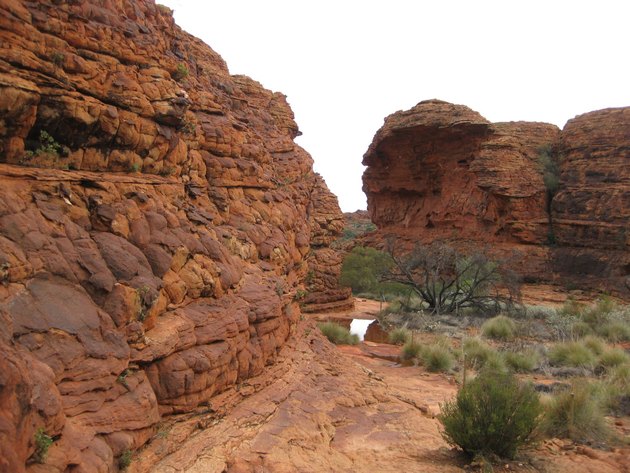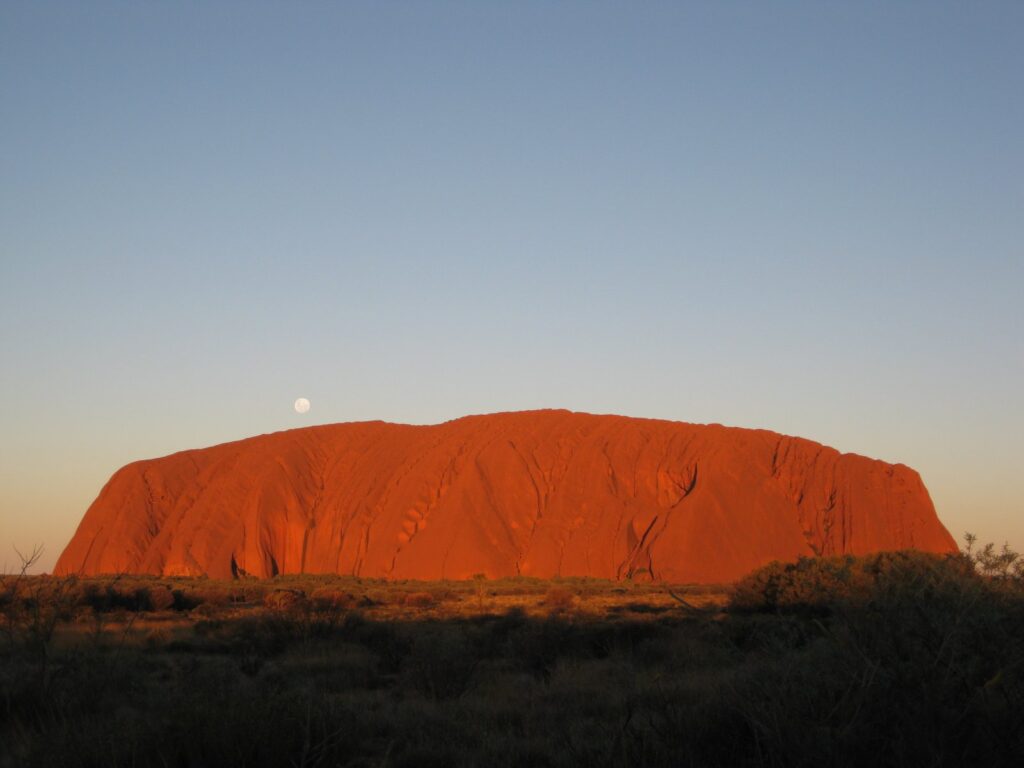They say the best things in life are free, they happen when you least expect and can be found in the most unusual places.
My trip to the Northern Territories in Australia wasn’t free and far from being cheap. But it was decided on the spur of the moment, without much hope of returning home with a burning desire to go back. And yet, it ended up being one of the best road trips I’ve ever been on.
Yes, remote, arid Australia is not everyone’s cup of tea. Poisoneous snakes, hungry crocodiles, unbearable heat, even more unbearable, countless flies and should I go on? I guess not. I’ve made my point. So, what is to like about such place?
Well, quite a bit, I’d say. Just open up, take the challenge and go to the land where wild brumbies reinvent the notion of freedom, and where wild open spaces and gaping canyons are the norm. Embrace solitude and the call of the wild. And don’t expect to come back the same person as you once were.
2 days in Alice Springs
I arrived in Alice Springs in May, the best time to visit Central Australia.
I expected it to be a big town with lots of Aboriginals living in it. I was only half right.
The place is so small that for the first time in my life, in record time, I was comfortable navigating the streets without feeling lost. Well done! Or, maybe not… How could anyone get lost when all the streets lead to the same main street where there is everything there is: the grocery store, the police, the hospital, the post office and the pub. Everything that matters, really. No extras. Some might say that’s boring. I’d simply say that’s charmingly simple. And, I believe another 2000 Americans who choose to call Alice Springs their home will agree. Yes, surprisingly, not everyone living in Alice Springs is an Aussie.
The location has its perks. Situated at the junction between the East MacDonnell Ranges and West MacDonnell Ranges, it is surrounded by a series of scenic places that can be accessed by a conventional vehicle and can be seen in half a day or less.
We spent our first afternoon there at Emily and Jessie Gaps and Trephina Gorge. You can hike here, cycle, go for a swim or admire Aboriginal rock paintings.

For the night, we chose to stay at Desert Palms Resort, not a fancy place but clean and pleasant.
The next full day was entirely dedicated to West MacDonnell Ranges.
First stop, Standley Chasm situated 50 km from Alice Springs. From the parking lot it’s an easy, 15 minutes self-guided walk at the end of which you’ll find an amazing deep red cleft crowded on both sides by craggy 80 metres tall slopes. Or, you can book one of the cultural tours that include a guided walk, lunch and a dot painting workshop.

If you are up for a challenge, then on your way back to the car, you can try a one hour section of the Larapinta trail. The hike is strenuous but well worth it. After the steep climb, at the top you will be rewarded with 360 degree view over the MacDonnell Ranges where the tallest mountains in the Northern Territory are located. Not too many people adventure so high up so our only friends up there were the flies which quickly became our enemies. Needless to say who won the war. The flies easily outnumbered us and, in the end, we had to admit defeat and start our retreat back to the valley.

Larapinta Trail
Next on the list, the Ochre Pits, for thousands of years a sacred place for the Aranda people. Ochre is a type of clay that comes in different colors, depending on the mineral content. It can be everything from yellow to white, red or purple. It is used by Aboriginals in ceremonies to paint their bodies, or mixed with local leaves as medicine.
A word of caution: do not remove any ochre from the site. $5000 and more fines should be quite enough of a deterrent.

The last stop, Glen Helen Gorge. The beauty of the gorge is best admired at sunrise when the red rock faces are breathtaking. Have a picnic, float on your back, spot the superb fairy wrens or just enjoy the silence .
For dinner we went to the infamous saloon bar in Alice Springs, a place full of character, decorated with boomerangs, old boots, toilet seats, a coffin engraved Ned Kelly and a six-metre crocodile skin. This is what I’d call an authentic entertainment experience!
Kings Canyon in 2 days
We reached Kings Canyon after driving a 4WD on a dirt track about 357 km via the Mereenie Loop Road. The road was not bad at all. At times we were able to travel at 90 km per hour. It took us probably around 5 hours from Alice Springs with couple of short stops in between. On the way, we’ve spotted our first dingo and our first pair of beautiful, bright coloured finches.

We booked a deluxe spa room at Kings Canyon Resort, the closest place to stay near the Canyon, just 10km away. Camping is not permitted. The room was beautifully decorated and the indoor spa overlooking the stunning rust-red escarpment was magnificent and well worth the extra money.

There are two main restaurants where you can have breakfast, lunch or dinner. Both of them are very good and the portions are quite generous. We had kangaroo steak and barramundi, both delicious.
One restaurant had live entertainment with country Aussie hits such as “Waltzing Matilda” and “Give Me A Home Amongst The Gum Trees” reminding you exactly where you are, amongst the gum trees, in rural Australia. The atmosphere was very friendly and relaxing. A big group of French tourists were dancing and it was just lovely to see people coming from all parts of the world indulging in pure Australian cuisine and country music.
Unfortunately, the first day there it rained heavily and we were told we were “in luck” as the rainfall in the previous 72 hours had been equivalent to the 12 months average for the Kings Canyon area.
But the next day, the sunshine was once again streaming in through our bedroom window.
We had a generous buffet breakfast and decided to head off to the 7 km rugged Rim Walk at Kings Canyon. We were told it should take us about 3 to 4 hours. However, it took us about 6 hours with all the stops in between for a cup of tea to admire the beehive-shaped sandstone domes and the spectacular views.
The trail is popular and very well marked so, unless you are keen to know about each and every plant or story of the place, you do not need a guide. We were definitely there for the experience, for some peace and quiet and we really enjoyed taking our time and feeling lost in the beauty of the scenery.
The trail started with a steep climb for about half an hour, but after that most of it was flat.

Kings Canyon, Rim Walk
One place we really enjoyed was the Garden of Eden, a spectacular oasis where the natural spring waterhole was surrounded by greenery that we did not expect to see amongst the predominant rocky and harsh landscape. We were truly blown away by the beauty of it all. We had the place to ourselves and so, despite the freezing water, we decided to give it a go and go in for a swim. It was surreal!

Kings Canyon, Garden of Eden

Kings Canyon, Rim Walk

Kings Canyon, Rim Walk

Kings Canyon, Rim Walk
Uluru-Kata Tjuta National Park in 2 days
From Kings Canyon it took us about four hours to get to Uluru, one of the most recognisable landmarks of Australia. The roads that lead to it are all sealed and there are few to no places of interests in between.
Once at Uluru, we stayed at Sails in the Desert Resort. The place was fairly secluded, quiet and elegant. The rooms were spacious and tastefully decorated.
Rested after a good night sleep, the first day, we went for a walk to Mala Walk to circumnavigate Uluru on foot. There, you can see some of the sacred caves where the Aboriginals used to live and now, prepare for ceremonies. There is also the 10 km Uluru Base walk, but you’ll need to bear the heat and make peace with the millions of flies.

Uluru, Base Walk

The ownership of Uluru rests with the Anangu Aboriginal Community which traditional leased the land to the Australian federal government for 99 years.
The sunsets here are spectacular and I felt one could just sit there for days looking at this magnificent 348 metres high rock.

Sunset at Uluru
The next day we visited The Kata Tjuta area, also named the Olgas. The place is a collection of 36 rock domes extending 6 km into the ground and rising up 546 meters above the desert. Hence, the name, Kata Tjuta, meaning “many heads.”
The area is accessible only via the Walpa Gorge or the 7.5 km Valley of the Winds.
We’ve done the 2.6 km Walpa Gorge walk which was nice but very windy.
Then, we’ve commenced the walk into the Valley of the Winds, stopping to the Karu lookout first. The scenery was beautiful and then the walk between the domes seemed to be out of this world. The hike is challenging at times and sturdy hiking shoes are a must, unless you are truly an acrobat with a keen desire for injuries.

The Olgas
We left the NT in awe, thinking that the best life is life that allows you to discover places like these ones. All unique in their own right, all having a story of their own, all beautiful and waiting to be uncovered layer by layer. Some places strike you with their beauty, like North Queensland in Australia. Others, challenging your mind and your senses are waiting to be found, understood and ultimately loved. Northern Territories in Australia is one of those.
My short trip to Central Australia was a reminder that true beauty can be found even in the most arid and unwelcoming places and that attaining true happiness is entirely within our power no matter if we are laying on a beach in Hawaii, in an expensive resort in Tahiti or just hiking the Kings Canyon in remote Australia.

Comments are closed